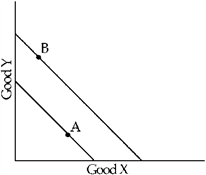If ________, a firm would operate in the short run and exit the industry in the long run.
A. TR > TVC but TR < TC
B. TR < TC and TR < TVC
C. TR > TVC and TR > TC
D. TR = TVC but TR > TC
Answer: A
You might also like to view...
Which of the following is a listing of the types or categories of resources?
A. Land, labor, and capital B. Land, labor, and education C. Land, labor, and efficiency D. Land, labor, and markets E. Land, labor, and inputs
The first table shows the market demand schedule for CDs, and the second table shows the cost structure of each firm. The CD market is perfectly competitive and there are 100 identical firms
The market price of a CD is ________, and ________ CDs are produced and sold. A) $9.00; 20,000 B) $9.50; 15,000 C) $10.00; 10,000 D) $8.50; 24,000
The equilibrium rental income paid to the owners of capital at any point in time equals the
a. marginal product of capital. b. value of the marginal product of capital. c. percentage of profits paid out to stockholders in the form of dividends. d. equilibrium purchase price of capital.
Figure 5-15

Hal initially consumes the combination marked as A in Figure 5-15. After his income increases, Hal consumes combination B. We can conclude that Hal views
a.
X as an inferior good and Y as a noninferior good.
b.
X as a noninferior good and Y as an inferior good.
c.
both X and Y as noninferior goods.
d.
both X and Y as inferior goods.